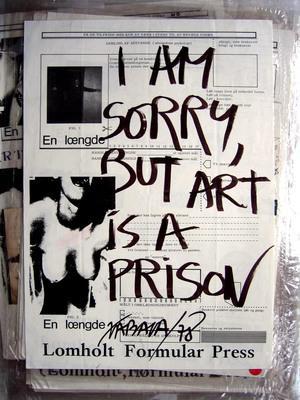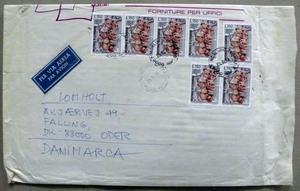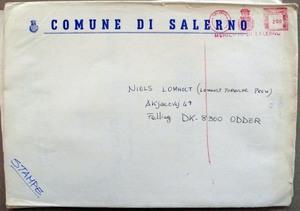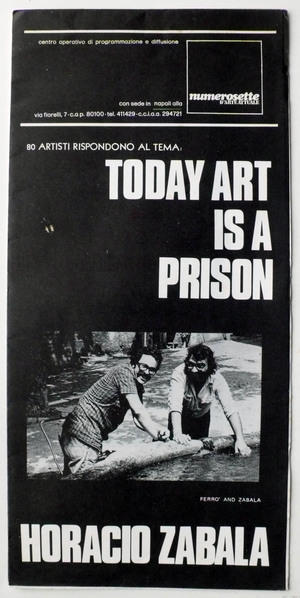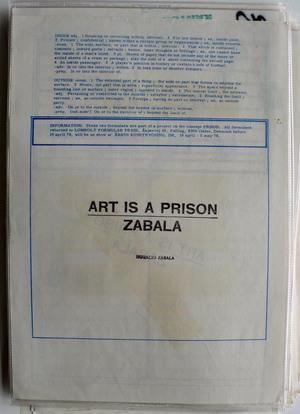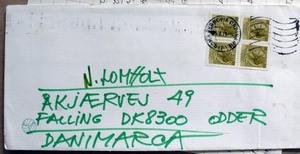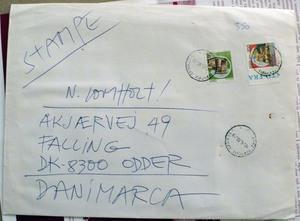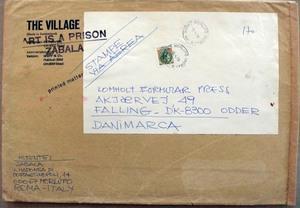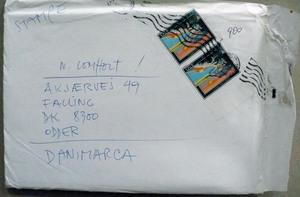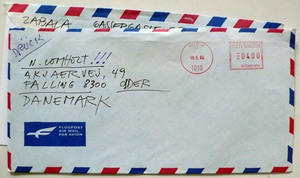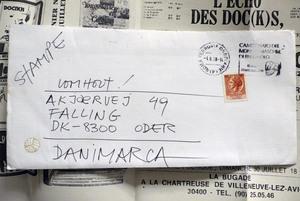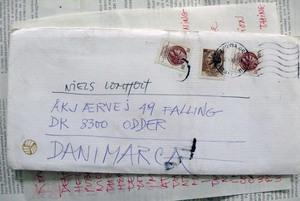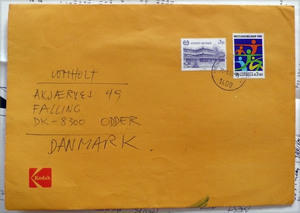Index: Horacio Zabala
Biography
Horacio Zabala was born in Buenos Aires in 1943. He received a degree in architecture from the Universidad de Buenos Aires. He emigrated to Europe in 1976, where he lived in Rome, Vienna and then Geneva for a total of 22 years. He currently lives and works in Buenos Aires.
He had his first solo exhibition in 1967, and he published his first theoretical text in 1972. From that year until 1976, he was a member of the Grupo de los trece. In May of 1973, he had an exhibition at CAYC (Centro de Arte y Comunicación) in Buenos Aires. The show was called Anteproyectos, and it included photographs, photocopies, printed cartographies, readymades, texts, installations and architectural designs of prisons; this show marked the beginning of the analytical line of work with which he would be identified. Through minimal visual languages and heterogeneous media, his works critically explore the social and aesthetic context of information and fiction.
He has curated and designed numerous group shows. The first, organized in 1975 along with Edgardo-Antonio Vigo, was called Última exposición internacional de artecorreo, (Mail Art Last Show) and it took place at the Galería arte nuevo in Buenos Aires. Two hundred and ten artists from twenty-five countries participated. His most recent curating projects are El modelo reducido, (The scale model) at CCEBA (Centro Cultural de España en Buenos Aires) in 2004; Doce obras sin título at the Galería Caja de arte, Buenos Aires and Zig Zag at the Galeria Berenice Arvani in San Pablo, Brazil, both in 2006. Recently, in 2011, participated in the show Sistemas, Acciones y Procesos. 1965-1975.
Settled in Rome in 1976, Zabala created and coordinated an international survey geared toward designers, critics, artists, historians and art theorists. Called Hoy el arte es una cárcel (Today Art is a Jail), the operation consisted of requesting images, information and documents about art as a closed system. The show toured, and culminated in a seminar organized by the Centro Internazionale Studi di Estetica and the Facultad de Filosofía y Letras of the Universidad de Palermo, Italy. The resulting study was published in Bologna in 1981. As the curator of the exhibition Test socio-imaginario – l’immagine del presente o il presente come immagine? at the Palazzo Orsini di Monterotondo, in Rome, during that period Zabala focused on the impact of the mass media on daily life. In 1983, also in Rome, he exhibited Il refugio antiatómico. Estetica de la catastrofe?, which consisted of drawings, photographs and texts on the production and consumption of prefabricated shelters in Europe.
In 1984, he moved to Vienna. He started a series of works based on the notion of the simulacrum in the mass media. He showed this work in Kunst und Massenmedien at the Palais Palffy in Vienna, and at the Galerie Donguy in Paris, under the title Duplications-dédoublements. In 1991, he settled in Geneva, where he worked on the issue of the visual perception of printed writing, works that he later showed at CIPM (Centre International de Poésie Marseille) in Marseille. A broader and more varied version of the show was exhibited in 1996 at the Museo de Arte Moderno in Buenos Aires.
In 1997, he concluded an interactive work (L'art ou le monde pour la deuxieme fois) conceived for the Internet that was produced by the Centre pour l’Image Contemporaine Saint-Gervais, in Geneva. In that city, he wrote El arte o el mundo por segunda vez, published by the Universidad Nacional de Rosario, Argentine, in 1998. In that same year, he presented two exhibitions: Salvar las apariencias, at the Museo de Arte Contemporáneo in Bahía Blanca and Ejercicios y tránsitos, at the Museo de Arte Moderno in Buenos Aires.
With Luis Felipe Noé, he wrote El arte en cuestión - conversaciones, published in 2000 in Buenos Aires by Adriana Hidalgo. He wrote also Marcel Duchamp y los restos del readymade, published in 2008 in Rosario by Laborde Editor, and Vademecum para artistas - observaciones sobre el arte contemporáneo, published in Buenos aires by Asunto Impreso Ediciones.
Since 1998, when he returned to Argentina, he has organized and participated in debates, given seminars and written on the problematic of modern and contemporary art. His most recent solo exhibitions are: Futuro imperfecto, at the Centro Cultural Recoleta, and Horacio Zabala, obras 1972-2002, at the Fondo Nacional de las Artes, both in Buenos Aires in 2002. In 2003, he exhibited Cada día somos menos at the Museo de Arte Contemporáneo of the Universidad Nacional de Misiones, Posadas. In 2004, he exhibited El juguete rabioso at the Complejo Cultural Santa Cruz, Río Gallegos. In 2007, he exhibited Horacio Zabala. Anteproyectos 1972-1978 at the Fundación Alon and in 2008, Ensayos en zigzag at the Galería Wussmann, both in Buenos Aires. In 2009 he exhibits his works at Henrique Faría Fine Arts, New York, in 2009 at Galería Carla Rey Arte contemporáneo and, in 2011, at Galería 11 x 7, both in Buenos Aires.
In 1975, as part of the Grupo de los 13, he received the PEACE '75 prize on the 30th anniversary of the United Nations, in Slovenj Gradec, ex-Yugoslavia. In 2004, he was awarded the Acquisition Prize from the LVIII Salón Nacional de Rosario, and in 2005 the Grand Acquisition Prize from the Salón Nacional de Artes Visuales in the area of new supports and installations.
His work is in the collections of the Museo Nacional de Bellas Artes, Argentina; Museu de Arte Contemporânea de Sâo Paulo, Brasil; Tate Modern, London, Inglaterra; The University of Iowa Museum of Art, Iowa, EEUU; Museo de Arte Moderno, Buenos Aires, Argentina; Museo de Arte Contemporáneo de Rosario, Santa Fe, Argentina; Museo de Arte y Memoria, La Plata, Buenos Aires, Argentina; University of Essex Collection of Latin American Art, Essex, Inglaterra; Museo Nacional Centro de Arte Reina Sofía, Madrid, España; Museo de Arte Latinoamericano, Buenos Aires, Argentina; The Ella Fontanals Cisneros Collection, Miami, USA; Daros Latinamerica, Zürich, Suiza and Fundación Alon para las Artes, Buenos Aires, Argentina.
Links
http://www.horaciozabala.com.ar/english/bio.html
http://printedmatter.org/tables/26
http://turbulence.org/blog/2011/07/29/systems-actions-and-processes-1965%E2%80%931975-buenos-aires/
